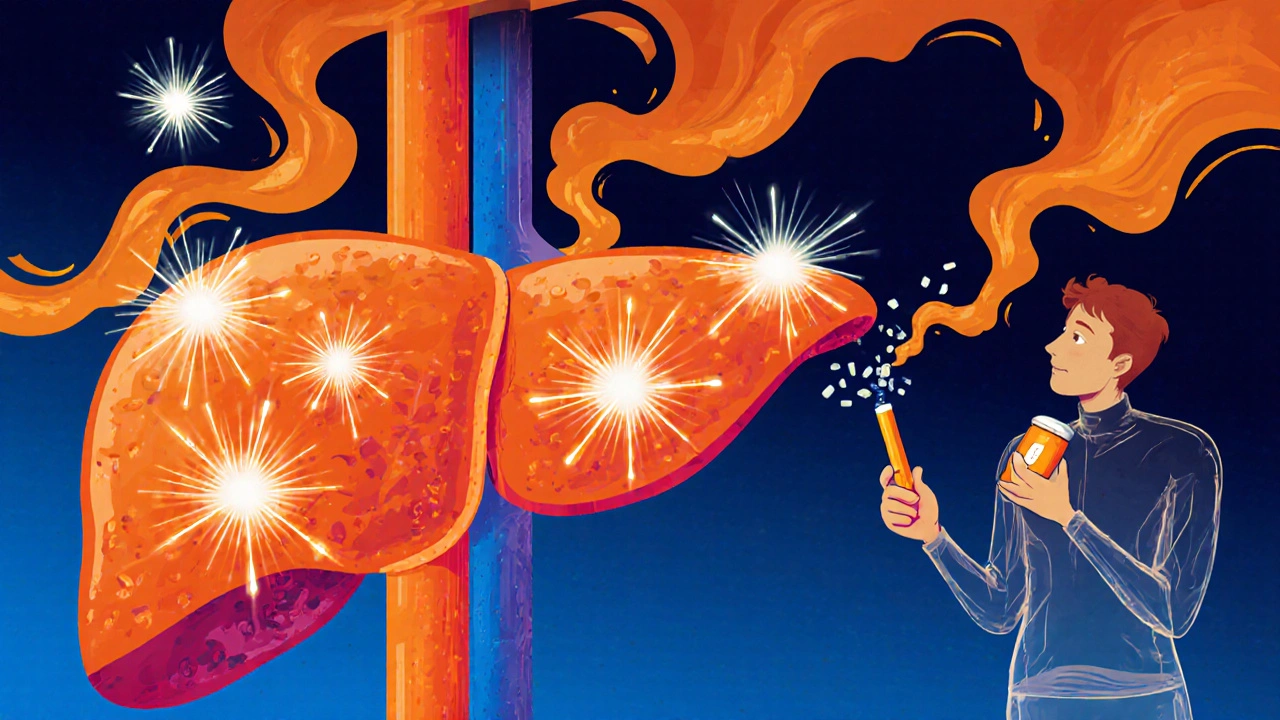
Clozapine Dose Adjustment Calculator
Clozapine Smoking Adjustment Tool
This calculator helps determine appropriate dose adjustments when smoking status changes. Based on clinical guidelines, smokers often need 40-60% higher doses while former smokers need 30-50% lower doses.
Therapeutic range: 350-500 ng/mL
Toxicity risk: Above 600 ng/mL
Enter your current dose and smoking status to see recommended adjustments.
When you’re taking clozapine for treatment-resistant schizophrenia, your body doesn’t just process the drug the same way every day. If you smoke, your clozapine levels can drop by 30%-sometimes as much as 50%. That’s not a small fluctuation. That’s the difference between your symptoms being under control and your psychosis coming back with full force. And if you quit smoking? Your levels can spike dangerously high, risking seizures, heart problems, or even life-threatening blood disorders. This isn’t theoretical. It’s happening every day in clinics, hospitals, and homes around the world.
Why Smoking Changes Clozapine Levels
Clozapine is broken down mostly by one enzyme in your liver: CYP1A2. That’s the key. Tobacco smoke doesn’t just stain your teeth or hurt your lungs-it floods your body with chemicals like polycyclic aromatic hydrocarbons. These bind to a receptor called AhR, which tells your liver to make more CYP1A2. More enzyme means faster breakdown. Faster breakdown means less clozapine in your bloodstream.This isn’t a slow process. Within 48 to 72 hours of starting to smoke regularly, your clozapine levels begin to fall. The effect builds over time. Heavy smokers-those with a pack-a-day habit or more-can see their clozapine concentrations drop so low that the drug stops working. Studies show that smokers often need 40% to 60% higher doses than non-smokers just to reach the same therapeutic level.
And it’s not just cigarettes. New research from the University of Toronto in 2024 found that e-cigarettes also induce CYP1A2. While the effect is about 15% to 20% weaker than traditional smoking, it’s still enough to cause problems. If you think vaping is a safe alternative for clozapine users, you’re mistaken.
The Numbers Don’t Lie
Therapeutic clozapine levels sit between 350 and 500 ng/mL. Go below that, and symptoms return. Go above 600 ng/mL, and toxicity risks climb sharply. Here’s what real patients experience:- A 32-year-old man on 450 mg daily of clozapine had levels at 150 ng/mL after starting to smoke. His symptoms worsened. His dose was raised to 650 mg. Levels stabilized at 420 ng/mL.
- A 45-year-old woman quit smoking but kept her 400 mg dose. Within two weeks, her levels hit 850 ng/mL. She was hospitalized for severe sedation and rapid heart rate. Her dose was cut to 250 mg.
- In one study of 142 patients, those who smoked had average clozapine levels 25% lower than non-smokers. But the range? From 10% to 50% lower. Some people barely budged. Others crashed.
This isn’t random. It’s predictable. And it’s dangerous if ignored.
Clozapine vs. Other Antipsychotics
Not all antipsychotics react this way. Risperidone? Mostly broken down by CYP2D6. No big effect from smoking. Olanzapine? Also metabolized by CYP1A2, but less dependent on it-only 30% to 40% of its clearance. That means smoking affects it, but not nearly as much.Clozapine is different. Up to 70% of its clearance relies on CYP1A2. That’s the highest of any antipsychotic. Combine that with a narrow therapeutic window and you’ve got a perfect storm. A 30% drop in levels isn’t just inconvenient-it’s clinically critical.
That’s why doctors don’t just monitor clozapine levels for everyone. They monitor them especially for smokers.
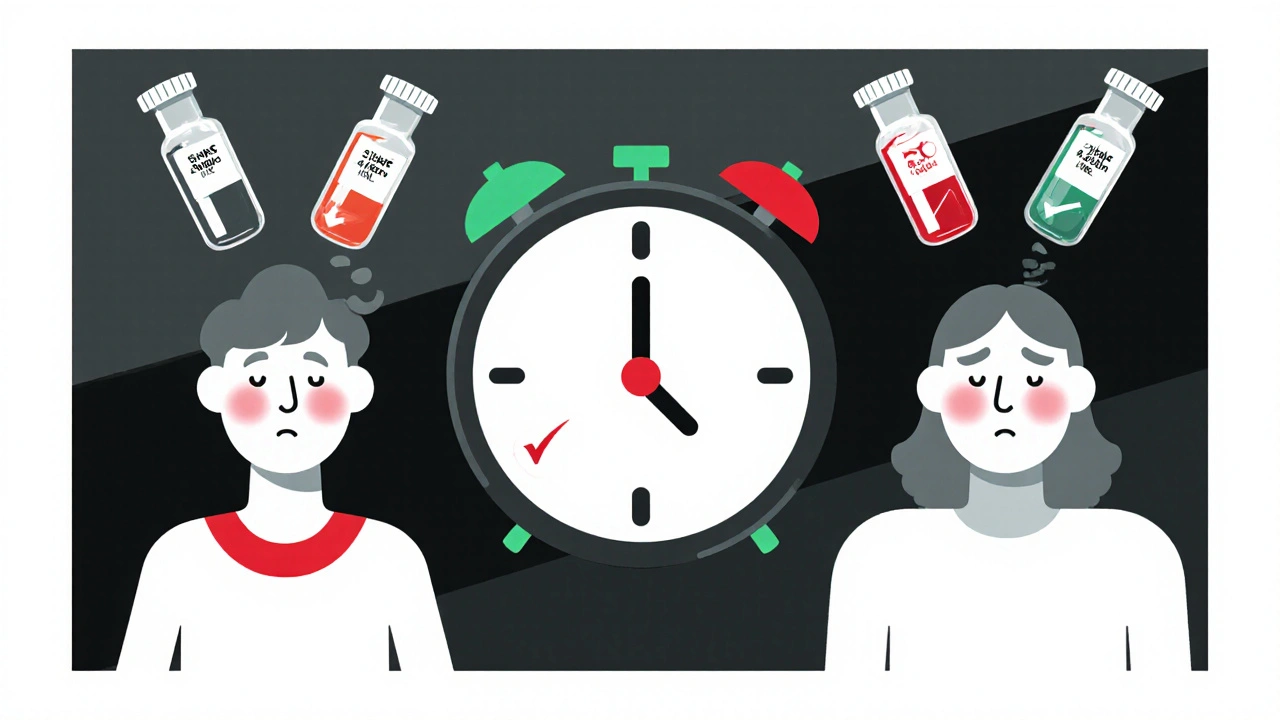
What Happens When You Quit Smoking
The reverse is just as dangerous. When a patient stops smoking, CYP1A2 activity doesn’t drop instantly. It takes one to two weeks to return to baseline. During that time, clozapine builds up. If the dose hasn’t been lowered, toxicity follows.One clinician on Doximity reported a case where a patient quit smoking cold turkey and developed seizures five days later. His clozapine level was 780 ng/mL. He’d been on 500 mg daily. After quitting, he should’ve been reduced to 250-300 mg. Instead, he stayed on his old dose. That’s how easily this goes wrong.
Patients often don’t realize the connection. They quit smoking because they’re trying to get healthier. They don’t expect their antipsychotic to turn toxic. That’s why education is part of the treatment.
How Clinicians Manage This
In top psychiatric centers, this interaction is treated like a protocol, not an afterthought. Here’s what good practice looks like:- Check clozapine levels before starting treatment-and again after any smoking change.
- Ask about smoking status at every visit. Not just once. Every time.
- If a patient starts smoking: increase dose by 40-60%. Recheck levels after one week.
- If a patient quits smoking: reduce dose by 30-50%. Recheck levels every 3-5 days for two weeks.
- Use electronic health record alerts. Systems like Epic now flag smoking status changes and prompt dose adjustments.
A 2023 study in JAMA Internal Medicine found that hospitals using these alerts reduced clozapine-related adverse events by 37%. That’s not just better care-it’s lifesaving.
Genetics Play a Role Too
Not everyone responds the same way. Some people have a genetic variant called CYP1A2 *1F/*1F. They start with normal enzyme levels. But when they smoke? Their CYP1A2 activity shoots up way more than others. That means even light smokers with this genotype can crash their clozapine levels.Testing for this variant isn’t routine everywhere-but it’s growing. In 2018, only 15% of U.S. academic centers offered CYP1A2 genotyping. By 2023, that jumped to 47%. For patients with a history of unstable levels or repeated hospitalizations, this test can be a game-changer.

What About Other Drugs That Induce CYP1A2?
Smoking isn’t the only culprit. Some medications also crank up CYP1A2:- Oxcarbazepine (used for seizures)
- Charcoal-grilled foods (yes, really-PAHs from smoke)
- Some herbal supplements like St. John’s Wort
If you’re on clozapine and start any new medication, ask your doctor: Does this affect CYP1A2? One study found that patients on both clozapine and high-dose oxcarbazepine had clozapine levels so low the drug was practically useless. That’s not a coincidence. That’s a dangerous combo.
The Bigger Picture
About 60% to 70% of clozapine patients smoke. That’s four to five times higher than the general population. The reason? Nicotine temporarily improves attention and reduces negative symptoms. It’s self-medication, even if it’s risky.That’s why quitting smoking isn’t just about lung health for these patients-it’s about mental health stability. But quitting without adjusting clozapine? That’s a trap. Many patients end up hospitalized because their dose wasn’t lowered. One PatientsLikeMe user wrote: “I’ve tried to quit three times. Each time, I ended up in the hospital because my clozapine levels went toxic before my doctor noticed.”
There’s progress. A 2024 clinical trial is testing a new sustained-release clozapine formulation designed to buffer against CYP1A2 swings. Early results show 40% less variability in blood levels among smokers. That’s promising.
But for now, the best tools we have are simple: ask, test, adjust. Monitor levels. Don’t assume. Don’t guess. Track smoking status like you track blood pressure.
What You Should Do
If you’re taking clozapine:- Be honest with your doctor about smoking-even if you think it’s a small habit.
- Ask for a baseline clozapine level before any dose change.
- If you start smoking, expect your dose to go up. Don’t wait for symptoms to return.
- If you quit smoking, tell your doctor immediately. Don’t wait for side effects.
- Ask if CYP1A2 genetic testing is right for you.
- Don’t assume vaping is safe. It still affects your levels.
If you’re a clinician:
- Make smoking status a vital sign-like temperature or blood pressure.
- Set up automatic alerts in your EHR when smoking status changes.
- Use therapeutic drug monitoring as your guide, not just clinical impression.
- Partner with pharmacists to review doses when smoking status shifts.
- Educate patients: “This isn’t about willpower. It’s about chemistry.”
This interaction is one of the most predictable, preventable, and dangerous in all of psychiatry. It doesn’t require fancy tech or expensive drugs. It just requires attention.
Does smoking reduce clozapine effectiveness?
Yes. Smoking increases CYP1A2 enzyme activity, which breaks down clozapine faster. This can lower blood levels by 30% to 50%, making the drug less effective. Patients may notice their psychosis symptoms returning or worsening, even if they’re taking the same dose.
How long does it take for clozapine levels to drop after starting to smoke?
Clozapine levels typically begin to fall within 48 to 72 hours after regular smoking starts. The full effect builds over a week or two. That’s why it’s important to check levels after just one week of smoking, not months later.
What should I do if I quit smoking while on clozapine?
Tell your doctor immediately. Your clozapine dose should be reduced by 30% to 50% to avoid toxicity. Levels can rise dangerously over the next 1-2 weeks as CYP1A2 activity returns to normal. Monitor for drowsiness, dizziness, fast heartbeat, or confusion-these could be signs of overdose.
Do e-cigarettes affect clozapine levels like regular cigarettes?
Yes. Research from 2024 shows that e-cigarettes also induce CYP1A2, though the effect is about 15% to 20% weaker than traditional cigarettes. Assuming vaping is safe for clozapine users is a dangerous misconception.
Can genetic testing help with clozapine dosing?
Yes. People with the CYP1A2 *1F/*1F genotype are more sensitive to smoking-induced enzyme induction. They may need larger dose increases when smoking and more careful reductions when quitting. Genetic testing isn’t routine yet, but it’s becoming more common in specialized clinics.
Why is clozapine more affected by smoking than other antipsychotics?
Clozapine relies on CYP1A2 for 60% to 70% of its clearance-more than any other antipsychotic. Olanzapine uses CYP1A2 too, but only for 30% to 40%. Risperidone uses CYP2D6, which isn’t affected by smoking. Clozapine’s narrow therapeutic range means even small changes in levels can cause serious problems.
What are the risks of not adjusting clozapine for smoking?
If you smoke and don’t increase your dose, clozapine won’t work-your psychosis may return, and you could end up hospitalized. If you quit smoking and don’t reduce your dose, you risk toxicity: seizures, heart rhythm problems, dangerously low white blood cell counts (agranulocytosis), and even death. This interaction causes 22% more hospitalizations than it should.


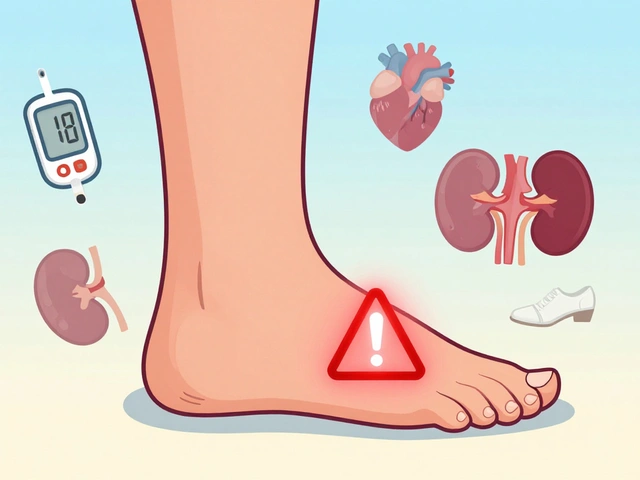
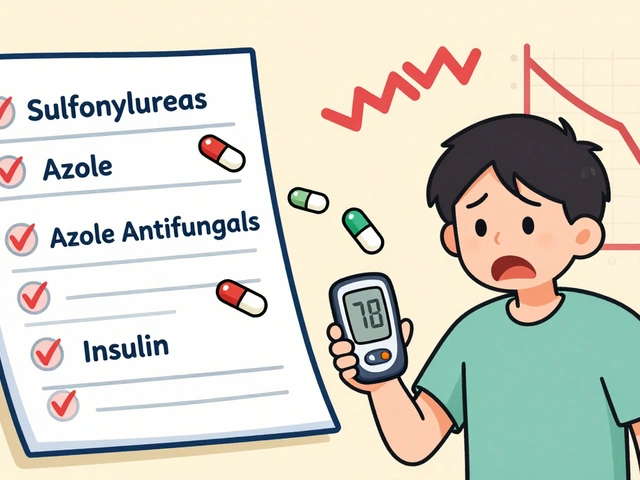
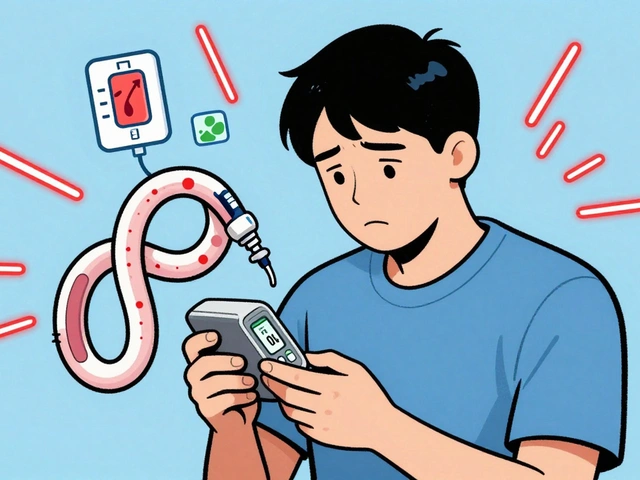
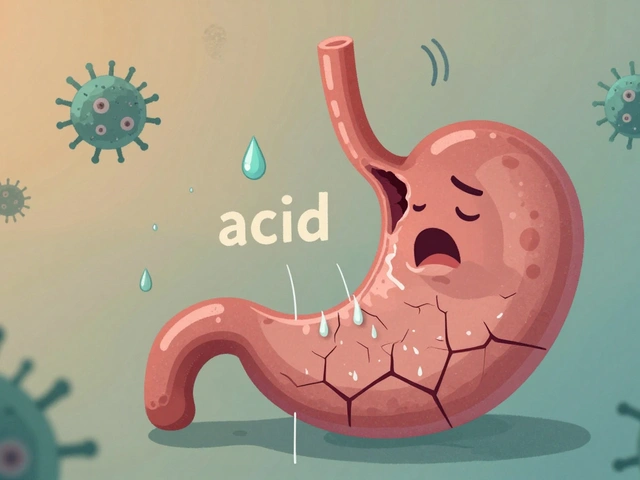
12 Comments
Okay but let’s be real-this is why so many of us with treatment-resistant schizophrenia end up cycling in and out of hospitals. I was on 400mg, smoked a pack a day, felt fine. Then I quit for a month to try and get healthier… woke up confused, dizzy, heart racing like I’d run a marathon. Turns out my levels were at 800 ng/mL. No one warned me. Not my psychiatrist, not my pharmacist. Just assumed I’d ‘know.’
It’s not about willpower. It’s chemistry. And if your doctor doesn’t treat smoking status like a vital sign, find a new one.
This is wild but makes total sense. I’m from India and my cousin’s on clozapine-he smokes bidis (those cheap hand-rolled ones). His doc never mentioned anything until his levels crashed. Now he’s on 700mg and still barely holding on. Vaping? He tried it thinking it’d be ‘healthier.’ Nope. Same drop. Guess what? He’s back to bidis now because he can’t afford the dose increases.
Why isn’t this info in every clinic brochure? Why does it feel like we’re all figuring this out on our own?
It’s fascinating how our biology is so deeply entangled with culture. Smoking isn’t just a habit-it’s a coping mechanism, a ritual, a quiet rebellion against the chaos inside. And clozapine? It’s the fragile bridge between sanity and collapse.
When we tell people to ‘just quit smoking,’ we’re asking them to dismantle a neurochemical lifeline without offering a replacement. That’s not compassion. That’s negligence wrapped in wellness slogans.
The real tragedy isn’t the enzyme induction-it’s that we treat addiction as moral failure instead of neurobiological adaptation. We fix the dose, but never the context.
LMAO so basically smoking is like a free drug booster? 😂 I knew my doc kept upping my dose but thought I was just ‘tolerant.’ Turns out I was just burning my meds like a candle. Also vaping is a scam. I tried Juul and my levels still dropped. My pharmacist just shrugged and said ‘weird.’
Also-st john’s wort?? Bro I took that for ‘anxiety’ last year. Felt like a zombie. No wonder. 😭
As a clinician in Lagos, I see this daily. Many patients here smoke to manage side effects-sedation, anhedonia. They don’t have access to regular blood tests. Dosing is often based on clinical impression alone. When they quit, we scramble. Some end up in coma.
This post is a lifeline. I’ve printed it and given copies to every patient who smokes. We now have a simple checklist: ‘Smoke? Level check. Quit? Dose cut. Vape? Still check.’
Knowledge is the only thing we can reliably distribute here. Thank you.
So let me get this straight… my entire mental health stability hinges on whether I light up or not? And my doctor treats me like a drug addict if I say I smoke, but won’t adjust my meds? Classic.
My last hospitalization? I quit smoking cold turkey because my mom cried. They didn’t reduce my dose. I had a seizure. They said ‘weird reaction.’
Meanwhile, my cousin’s on risperidone and smokes like a chimney and he’s fine. Why am I the guinea pig? Why is clozapine the only drug that treats me like a chemical equation?
Let’s be honest-this isn’t about smoking. It’s about control. The pharmaceutical industry doesn’t want you to know that a $2 cigarette can nullify $10,000 worth of medication. They profit from unstable patients. More hospitalizations. More ER visits. More long-term prescriptions.
And now they’re pushing ‘sustained-release clozapine’? That’s just a new revenue stream. They know people will pay extra to avoid the ‘smoking trap.’
Don’t trust the system. Test your own levels. Demand genetic screening. And if your doctor doesn’t mention CYP1A2? Run.
SO I QUIT SMOKING AND MY DOCTOR DIDN’T TOUCH MY DOSE AND NOW I’M A ZOMBIE 😭
Like, I slept for 18 hours straight. My heart felt like it was gonna punch through my ribs. I thought I was dying. Turned out my clozapine level was 720. I cried for 3 hours. Then I called my pharmacist and she said ‘oh honey, you’re not the first.’
Why is this not on every damn TV ad? Why is this not a public health campaign? ‘Smoking? Your meds just quit too.’
Interesting how the same enzyme that breaks down clozapine also processes caffeine. I noticed my coffee started hitting harder after I quit smoking. Same mechanism. I stopped drinking it for a week-felt better.
Also, I’ve been on clozapine for 12 years. I smoked for 8. My levels fluctuated wildly until I started tracking my dose and smoking daily. Now I have a spreadsheet. It’s weirdly empowering.
Not everyone needs genetic testing. But everyone needs to track. Just write it down. Paper. Pen. Your phone. Doesn’t matter. Track it.
There’s a quiet dignity in how medicine fails us-until we demand better. We’re told to be compliant, to follow orders, to trust the system. But when the system ignores the most predictable interaction in psychopharmacology, compliance becomes complicity.
Perhaps the real treatment isn’t adjusting the dose-but adjusting how we think about care. Not as a transaction between patient and provider, but as a shared responsibility shaped by biology, culture, and dignity.
This post is a quiet revolution. Thank you for naming the invisible.
I’m a nurse on a psych unit. We had a guy last month-38, on clozapine, smoked 2 packs a day. His level was 120 ng/mL. He was hallucinating in the hallway. We raised his dose, he stabilized. Then he quit cold turkey for his kid’s graduation. Didn’t tell anyone. Came in two weeks later with tremors and a heart rate of 140.
He looked at me and said, ‘I just wanted to be healthy.’
I cried after my shift. We need better systems. Not just more meds. More awareness. More humanity.
My brother’s on clozapine. He smokes. I’ve been his unofficial care coordinator for years. We track his dose, his smoking, his sleep, his coffee intake. We even log his meals-grilled meat can drop levels too. We use a shared Google Doc. It’s weird, but it works.
When he started vaping last year, I made him test his levels. They dropped 22%. We told his doctor. He was skeptical. We pushed. They adjusted. He’s stable now.
Don’t wait for a crisis. Start tracking today. Even if it’s just a sticky note on your fridge. Knowledge is power. And power is stability.